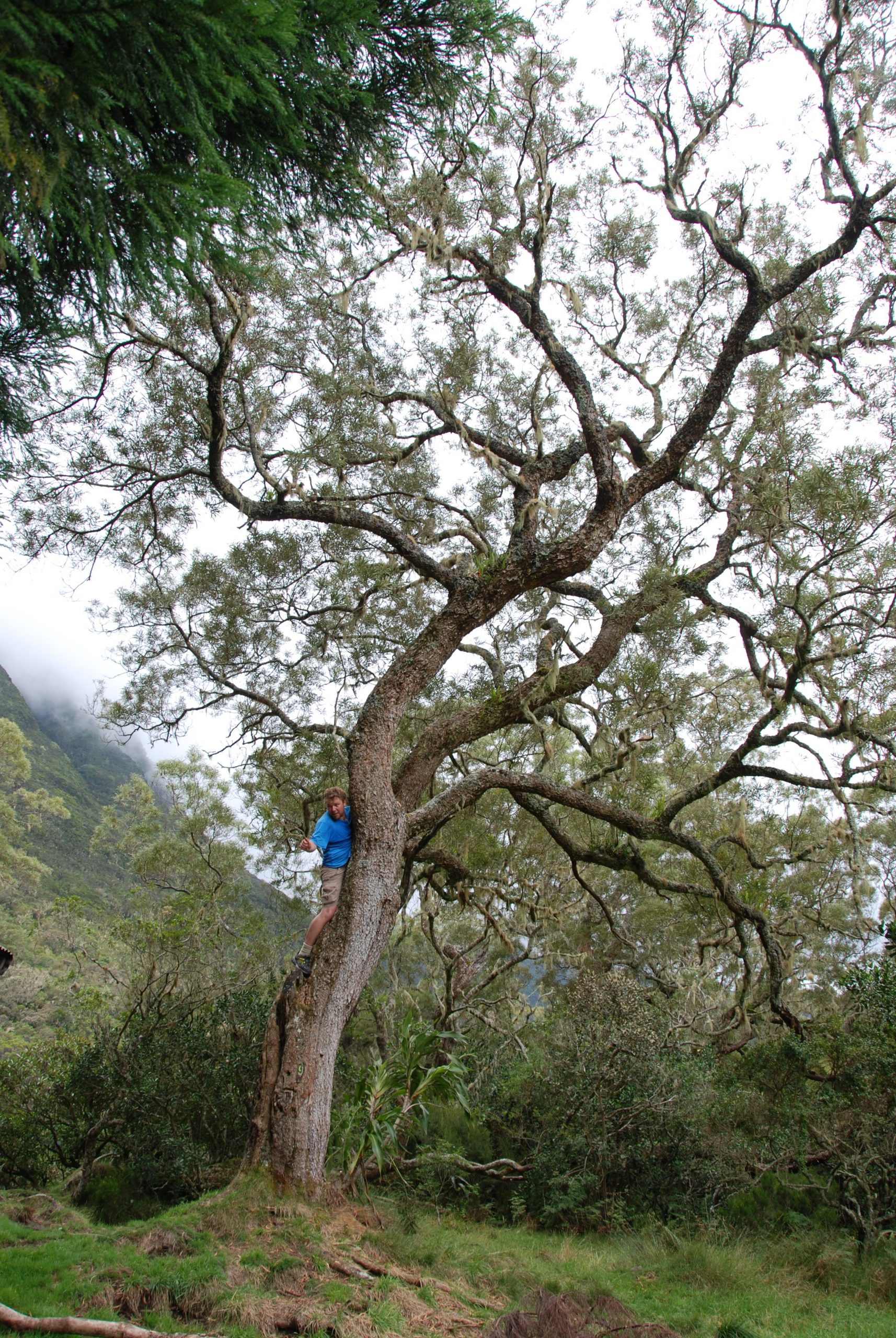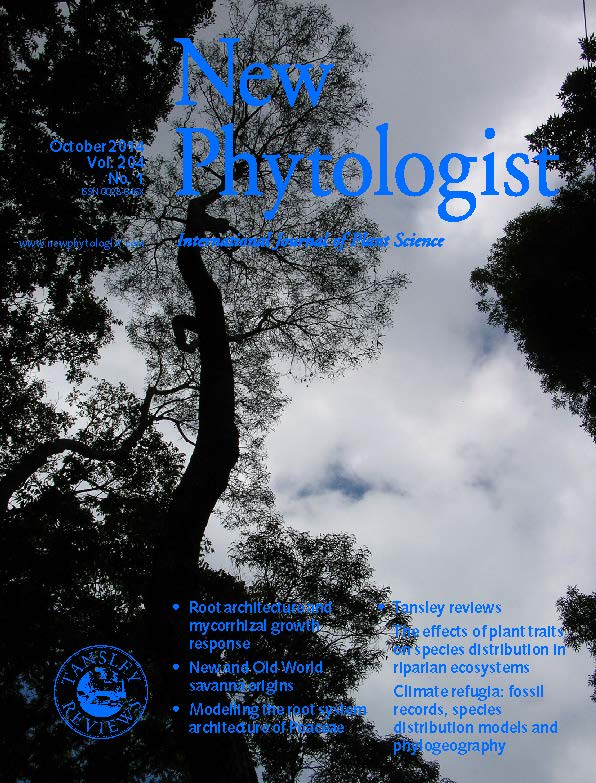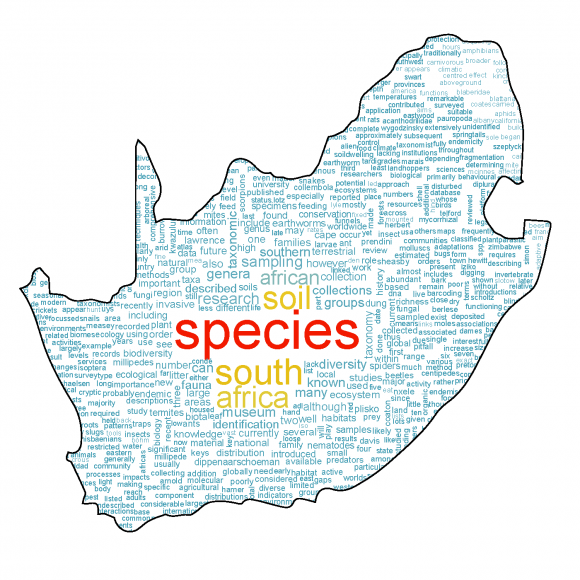2 July 2014 | By Jaco Le Roux
Island biogeography theory predicts that most island species originate from nearby mainland regions and therefore arrive through rare, long-distance dispersal events. How close islands are to mainland regions must therefore be an important factor in determining the make-up of island biotas. For example, the Hawaiian Islands are approximately 4000 km from the nearest mainland and it is estimated that historically one new species arrived every 35 years or so. However, long-distance dispersal alone is not enough for the establishment of island biota; environmental conditions need to be similar on the island and the mainland of origin. For example, most of the Hawaiian Islands’ dry alpine flora originated from similar regions in the dry south-western United States and Mexico, whereas a large percentage of the archipelago’s beach flora are direct descendants of beach plants from other nearby tropical Pacific islands and tropical continental shores.
When new species arrive on islands they often undergo impressive radiations due to various evolutionary factors such as strong genetic drift and the availability of diverse and unoccupied niches. Moreover, islands are also often considered the ‘last stop’ for species on extreme long-distance voyages. In other words, islands rarely act as donors of flora to other far-off regions but only exchange biota with nearby neighbouring islands. This observation is probably one of the biggest contributing factors that made Darwin realize the important link between geographic isolation and evolution during his voyage on the HMS Beagle.
 A recent study by C·I·B researcher Jaco Le Roux and co-workers published in New Phytologist has described what is possibly the longest (and most unlikely) natural dispersal event ever recorded. The Hawaiian Islands in the Pacific Ocean and La Réunion Island in the Southern Indian Ocean are just about as far apart as you can get – they lie at opposite ends of the planet, some 18,000 km apart. Despite the huge geographical separation, the morphological similarity between koa trees (Acacia koa) and tamarin des hauts (Acacia heterophylla) is remarkable. Both tree “species” were until now considered endemic to their respective island homes. Wood from both trees is highly valued and the trees are of significant cultural value. Outrigger canoes and the very first surf boards were made from A. koa wood in Hawaii.
A recent study by C·I·B researcher Jaco Le Roux and co-workers published in New Phytologist has described what is possibly the longest (and most unlikely) natural dispersal event ever recorded. The Hawaiian Islands in the Pacific Ocean and La Réunion Island in the Southern Indian Ocean are just about as far apart as you can get – they lie at opposite ends of the planet, some 18,000 km apart. Despite the huge geographical separation, the morphological similarity between koa trees (Acacia koa) and tamarin des hauts (Acacia heterophylla) is remarkable. Both tree “species” were until now considered endemic to their respective island homes. Wood from both trees is highly valued and the trees are of significant cultural value. Outrigger canoes and the very first surf boards were made from A. koa wood in Hawaii.
Botanists have been wondering about the peculiar distribution of koa and tamarin des hauts for more than a century. These two “species” are curious outlier members of the Australian phyllode acacias – a group of some 1012 species that were previously grouped in Acacia subgenus Phyllodineae. Three hypotheses have been advanced over the years to explain the disjunct distribution of these two iconic trees: 1) They originated via two separate and independent long-distance dispersal events from mainland Australia (the centre of origin of the genus Acacia); 2) Koa trees are the descendants of an acacia that colonized the Hawaiian Islands from Australia which then dispersed onwards to Réunion to give rise to tamarin des hauts; 3) Early humans moved both species to their island destinations through Asia.
Using a molecular phylogeny in conjunction with the known ages of the Hawaiian Islands, Le Roux et al. showed that the mysterious distribution of these island endemics is due to a natural long-distance dispersal event from Australia, followed by an even-longer (18,000 km) leap between the Hawaiian Islands and Réunion. This is the longest single natural dispersal event ever recorded and the researchers estimated that it must have occurred in the last 1.4 million years, long before the existence of modern humans. These two acacias on different islands are so closely related that they will need to be reclassified as the same species. Niche modelling by Le Roux et al. confirmed that these acacia populations occupy similar ecological niches on their respective home islands.
So how on earth did a tree manage to travel 18 000 km between two tiny and isolated specs of land? Plants can achieve extreme long-distance dispersal in one of two ways — through the air or in the sea. The latter takes place when seed or plant fragments are carried by sea currents (e.g. coconuts) or by rafting (e.g. attached to a log). Dispersal through the air can be accomplished through strong wind and storm conditions, or more commonly, by hitching a ride on birds. The researchers argued against a sea voyage for the ancestors of tamarin des hauts as acacia seeds are poorly adapted for survival in seawater and both koa and tamarin des hauts are mid to high elevation trees, i.e. they do not occur anywhere near the shore. Le Roux says “Our best guess is that seabirds — in particular petrels, such as the endemic Barau’s Petrel from Réunion Island — transported the seeds. In Réunion, these birds dig burrows at elevations that coincide with the distribution of the acacias. It is also well-known that ingested seeds can be retained in the stomachs of petrels for weeks and even months”.
It is therefore possible that lost petrels from Hawaii strayed into the wrong ocean, finding there a new mountainous island at the right latitude, and delivered the seeds that would later become the tamarin des hauts so typical of Réunion Island.
This research came about as by-product of work on the ecology and biogeography of Australian acacias undertaken to understand why many species in the group are important invasive species.
2014 Stellenbosch University Research Review Around the world by hitching a ride
Media links:

 Read the paper
Read the paper 
